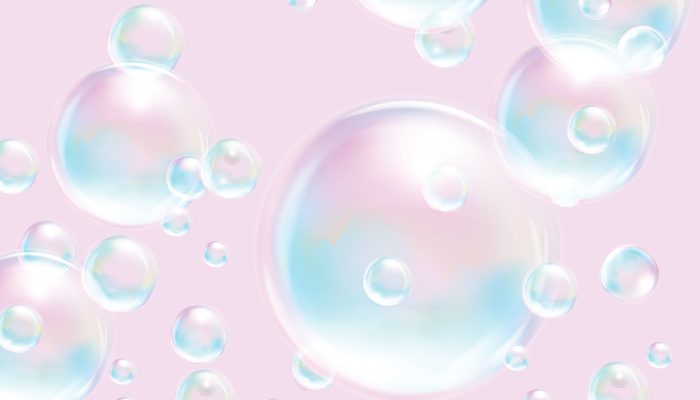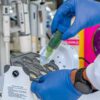
When your fizz goes flat, the wine itself is not always to blame, reports Eric Wilkes of the AWRI
Sparkling wine is at the centre of many celebrations, to a large extent because of the ritual associated with opening this fizzy beverage. There is, however, an awful lot of science behind the bubbles in sparkling wine and some unique aspects that need to be taken into account with its packaging and shelf life. Once a sparkling wine is in the bottle, ensuring a sound product tends to be mostly about keeping the oxygen out and the bubbles in.
Just as in many other wines, oxidation is an obvious fault in sparkling wines that can be perceived negatively by consumers. An enduring myth is that because there is a positive pressure within the bottle, no oxygen can find its way in. Unfortunately, the physics of gases means that this is simply untrue.
Gas diffusion through a permeable barrier (and a cork closure is a permeable barrier) is governed by the partial pressure of the gases on either side. Because the proportion of oxygen in the atmosphere is much higher than in the head space of a bottle there will always be a driver for oxygen to diffuse through the barrier to redress the balance, even if the net flow of gas (carbon dioxide in the case of sparkling wine) is in the other direction.
Sparkling wine closures have oxygen transmission rates (OTRs) which are broadly equivalent to still wine closures. The AWRI has carried out studies on a range of alternatives to traditional two-disc sparkling corks, with many of the newer options having a lower OTR than cork. These newer closures include carefully processed technical cork, which tends to be more consistent and less prone to random failure than natural cork closures, synthetic options and screwcaps designed for sparkling wines, which can be opened under pressure without the risk of creating projectiles. Such closures, however, while technically good at preserving wine and having lower incidences of random failure, do not generally address the customer need for one of the rituals associated with sparkling wine. In other words, they don’t go pop!
If it’s not enough that oxygen can enter sparkling wine via the cork, the cork closure itself can introduce a huge proportion of oxygen immediately after bottling. Cork, like a sponge, is full of holes and, just like a sponge, when you squeeze it into the bottle the contents of those holes has to go somewhere. Trials at the AWRI have seen that in sparkling wines, the closure can contribute 4 to 5 mg/L of entrained oxygen to the total package oxygen, which is a lot when you consider that most wineries try to package their products with dissolved oxygen levels well below 1 mg/L.
Luckily, although sparkling wine is just as prone to oxygen ingress as still wine, its very nature means it has an increased ability to resist the effects of oxidation. Wine pH is one of the most important parameters in the chemistry of wine, having a direct impact on a wide range of equilibria which decide the path the wine can take, including oxidation. Sparkling base wines are usually produced with low pH and the CO2 that gives sparkling wine its fizz also lowers pH through the formation of carbonic acid. In low pH wines the impacts of oxygen tend to be less, as is the ability of metals present in the wine such as copper and iron to catalyse oxidation reactions. This means that the lower levels of SO2 typically found in sparkling wine for sensory reasons can still provide adequate protection against oxidation.
In general, sparkling wines sealed under both traditional and newer closures retain CO2 in a similar manner, with roughly 10 percent of the dissolved gas being lost per year. Historical issues of flat sparkling wines tend to be related to random failures of traditional closures, poorly maintained packaging equipment or the mismatching of bottle bore sizes with closure size.
So the final question to be asked is, will a silver spoon in the neck of an opened bottle help keep the fizz overnight? Sadly, the answer is no (although it may help to remove any reductive odours, but that is another story). The best way to ensure that a sparkling wine keeps its fizz is to cool it down slowly over a few days before opening, allowing all the CO2 to dissolve into the wine, giving a longer lasting reservoir of gas to form bubbles. Rapid chilling before opening does not give time for this dissolution to happen, which means that much of the gas (and the potential bubbles) is likely to disappear with the initial pop.
• This article first appeared in the November-December issue of WBM – Australia’s Wine Business Magazine. To subscribe visit www.wbmonline.com.au/shop
Related content













Recent Comments